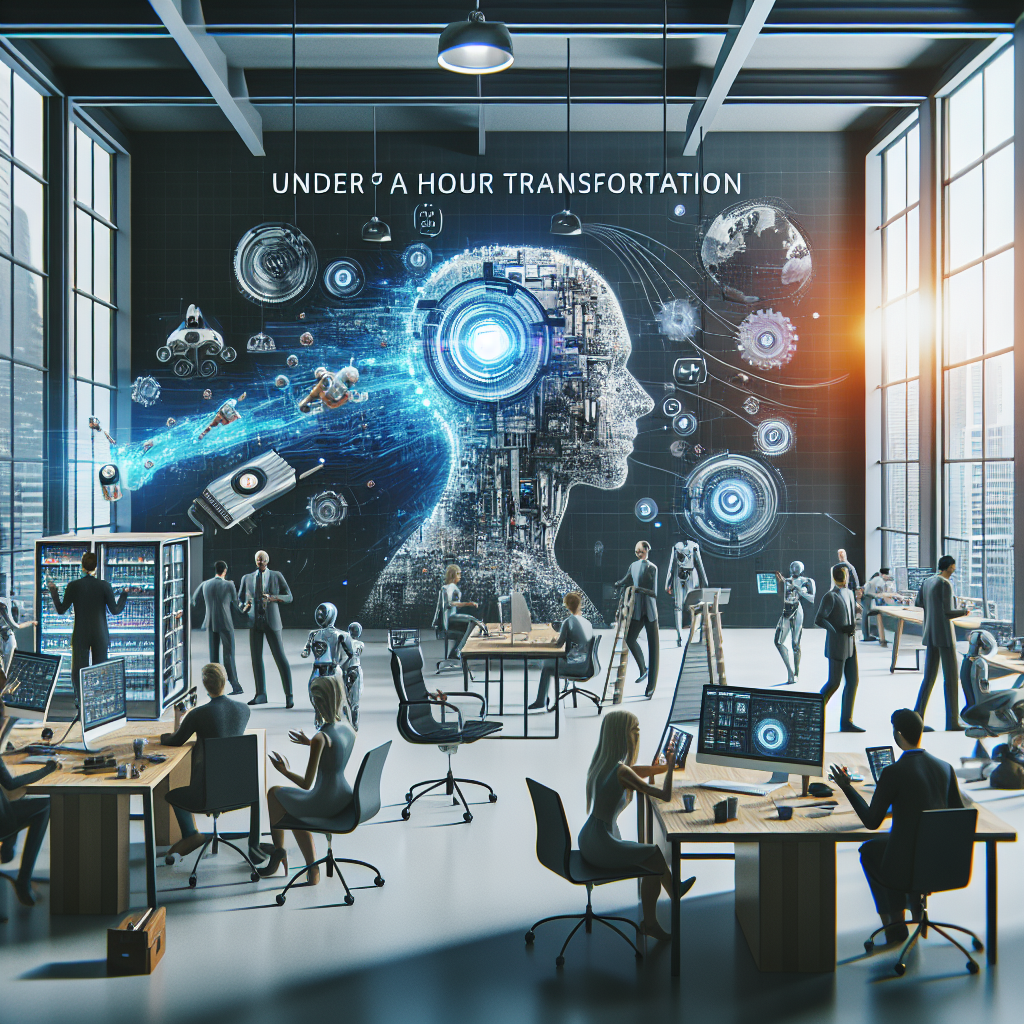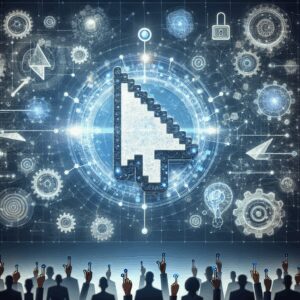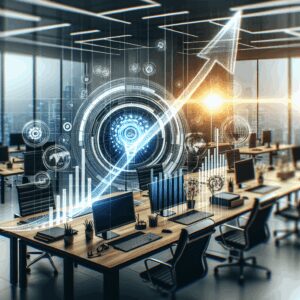Revolutionizing Creative Teams: Building a $70k AI Powerhouse in Under 70 Minutes
In the rapidly evolving landscape of digital marketing and creative production, artificial intelligence is reshaping how teams operate and deliver results. A recent YouTube video by tech innovator Nick Saraev has sparked considerable interest by demonstrating how to construct a high-powered AI creative team valued at $70,000 in just 66 minutes using the automation tool N8N. This groundbreaking approach not only challenges traditional notions of team building but also showcases the immense potential of AI in revolutionizing creative workflows.
In this comprehensive analysis, we’ll dive deep into the implications of Saraev’s innovative system, explore its potential applications across industries, and examine how it fits into the broader context of AI adoption in business. We’ll also look at expert insights, market trends, and practical considerations for implementing similar AI-driven solutions in your own organization.
The Power of AI in Creative Workflows
Before we delve into the specifics of Saraev’s system, it’s *crucial* to understand the growing importance of AI in creative processes. According to recent industry analysis, the AI market is expected to grow by 15.3% annually through 2025. This rapid expansion is driven by the increasing recognition of AI’s potential to enhance efficiency, creativity, and innovation across various sectors.
In the realm of digital advertising and content creation, AI is proving to be a game-changer. It’s not just about automating repetitive tasks; AI is now capable of generating creative content, analyzing market trends, and even predicting consumer behavior with remarkable accuracy.
“More or less every ad on planet Earth when run now exists in an ad library, a regulatory compliance thing that forces advertisers to put all of their ads on this database. If you’re keen, you can actually scrape that data source to get everything you need in order to regenerate the ad with some sort of parasite flow.”
Nick Saraev
This insight from Saraev highlights a key advantage of AI in the creative process: the ability to leverage existing data to generate new, innovative content. By tapping into vast libraries of existing ads, AI can analyze patterns, extract successful elements, and create new variations that are likely to resonate with target audiences.
Building an AI Creative Team: The N8N Approach
At the heart of Saraev’s demonstration is N8N, a powerful workflow automation tool that allows users to connect various applications and services to create complex, automated processes. In this case, Saraev used N8N to build a system that can scrape ad libraries, analyze the content, and then use AI to generate new, original ad creatives based on successful templates.
The implications of this approach are profound. Traditionally, assembling a creative team capable of producing high-quality, data-driven ad content at scale would require *significant* time, resources, and expertise. With Saraev’s AI-powered system, however, much of this process can be automated and optimized, potentially saving organizations substantial time and money while improving output quality and quantity.
“What we’re seeing with AI is not just a trend, but a fundamental shift in how industries operate.”
Michael Thompson, Senior Industry Analyst at Global Business Insights
This sentiment is echoed in the data. Studies show that 73% of businesses implementing AI strategies see improved performance within 6 months. The ability to rapidly deploy AI solutions like the one demonstrated by Saraev could give companies a *significant* competitive edge in today’s fast-paced digital landscape.
Key Advantages of AI-Driven Creative Teams
One of the most striking aspects of Saraev’s demonstration is the speed and efficiency with which the AI system can produce creative content. Traditional creative processes often involve multiple rounds of brainstorming, drafting, and revisions. With AI, however, this process can be dramatically accelerated.
“In reality, if you were to pay somebody on Fiverr or whatnot to make an ad for you or do some sort of creative, the likelihood that they’re going to get it perfect on the first go is pretty low. AI is kind of similar, so what we do is we just avoid that problem entirely by having it generate 3, 4, 10, 500 variants per source ad and then eventually you or somebody on the team just picks the one that looks the best and moves forward with it.”
Nick Saraev
This approach highlights several key advantages of AI in creative work:
- Speed of Production: AI can generate hundreds of variations in minutes, a task that would take human teams days or weeks.
- Cost-Effectiveness: By automating much of the creative process, organizations can significantly reduce labor costs.
- Data-Driven Creativity: AI can analyze vast amounts of data to inform creative decisions, potentially leading to more effective ads.
- Scalability: Once set up, an AI system can easily scale to handle increased demand without proportional increases in cost or time.
Implications for the Creative Industry
The emergence of AI-powered creative teams raises *important* questions about the future of creative work. While some may view AI as a threat to traditional creative roles, others see it as a tool that can enhance human creativity and productivity.
“The future of AI lies in understanding the intersection of technology and human behavior.”
Dr. Sarah Mitchell, Technology Innovation Specialist at MIT Technology Review
This perspective suggests that rather than replacing human creatives, AI is more likely to augment their capabilities. By handling routine tasks and generating initial concepts, AI can free up human creatives to focus on higher-level strategy, emotional resonance, and brand storytelling – areas where human insight and creativity remain invaluable.
Market data indicates that AI adoption has increased by 45% since 2023, suggesting that creative professionals who embrace AI tools and workflows may find themselves at a *significant* advantage in the coming years.
Practical Applications and Implementation
For organizations looking to leverage AI in their creative processes, Saraev’s demonstration offers a compelling starting point. However, it’s *important* to note that implementing such a system requires careful planning and consideration.
Here are some key steps for organizations considering AI-powered creative teams:
- Assess Current Workflows: Identify areas where AI could most effectively streamline or enhance existing processes.
- Data Preparation: Ensure you have access to high-quality data to train and inform your AI systems.
- Tool Selection: Choose AI and automation tools that integrate well with your existing tech stack.
- Team Training: Invest in training for your team to effectively work alongside AI tools.
- Ethical Considerations: Develop clear guidelines for the ethical use of AI in creative work, including issues of copyright and originality.
Research reveals that companies utilizing AI technologies report 28% higher efficiency rates. However, it’s *crucial* to approach implementation strategically to realize these benefits fully.
Future Outlook: The Evolution of AI in Creative Work
As AI technology continues to advance, we can expect to see even more sophisticated applications in the creative field. Some potential developments include:
- More advanced natural language processing, allowing AI to generate highly nuanced and contextually appropriate ad copy
- Improved image and video generation capabilities, potentially revolutionizing visual content creation
- Enhanced personalization, with AI creating tailored content for individual consumers at scale
- Integration with emerging technologies like augmented and virtual reality for immersive ad experiences
Global spending on AI solutions is projected to reach $2.4 billion by 2025, indicating substantial investment and growth in this area. As these technologies mature, they are likely to become increasingly accessible to businesses of all sizes, potentially leveling the playing field in the creative industry.
“The integration of AI has become *essential* for companies looking to remain competitive in today’s market.”
Lisa Chen, Strategic Business Consultant at Innovation Partners LLC
Conclusion: Embracing the AI-Powered Creative Future
Nick Saraev’s demonstration of building a $70,000 AI creative team in just over an hour serves as a powerful illustration of the transformative potential of AI in creative work. While the idea of AI-generated content may seem daunting to some, the reality is that these tools are becoming increasingly *essential* in today’s fast-paced, data-driven marketing landscape.
As we’ve explored, the benefits of AI in creative processes are numerous: increased efficiency, cost-effectiveness, data-driven decision-making, and the ability to generate a wide variety of content quickly. However, it’s *crucial* to remember that AI is a tool to enhance human creativity, not replace it. The most successful implementations of AI in creative work will likely be those that find the right balance between machine efficiency and human insight.
For businesses and creative professionals alike, the message is clear: embracing AI is no longer optional but necessary to remain competitive. By understanding the capabilities of AI, investing in the right tools and training, and developing strategies that leverage the strengths of both human and artificial intelligence, organizations can position themselves at the forefront of the creative industry’s next evolution.
As we look to the future, one thing is certain: the creative landscape will continue to be shaped by technological advancements. Those who adapt and innovate with tools like the one demonstrated by Saraev will be well-positioned to lead in this new era of AI-powered creativity.





Leave a Reply